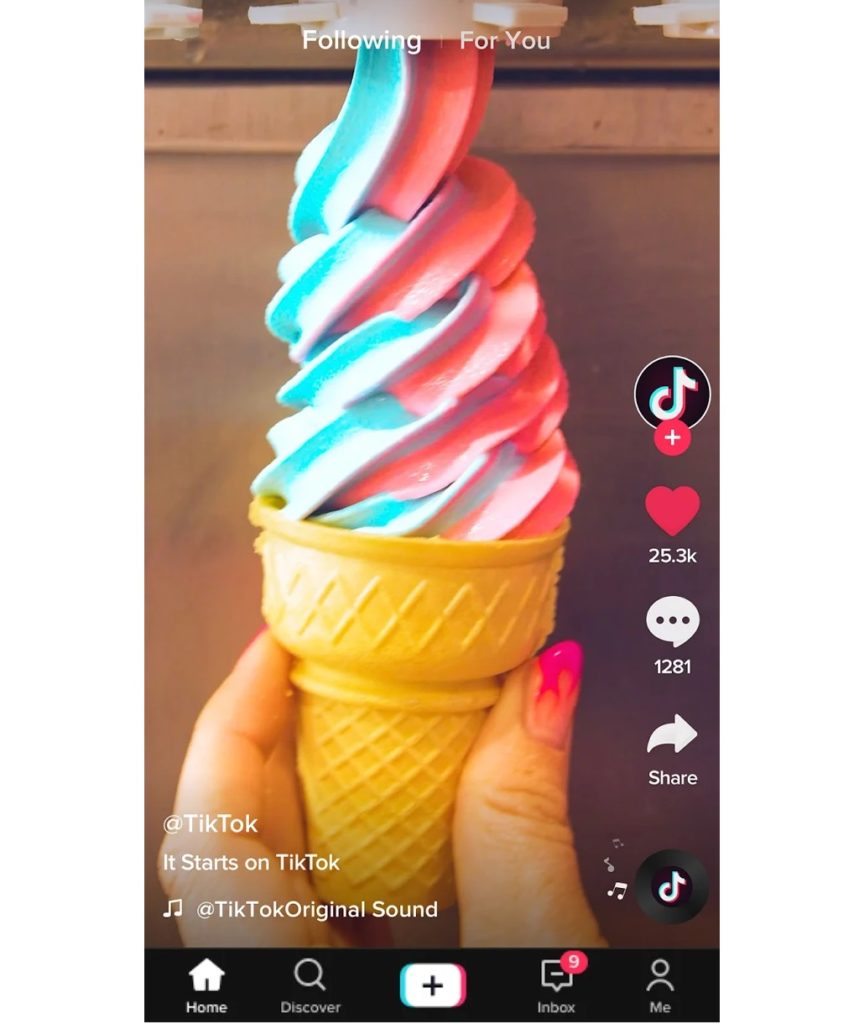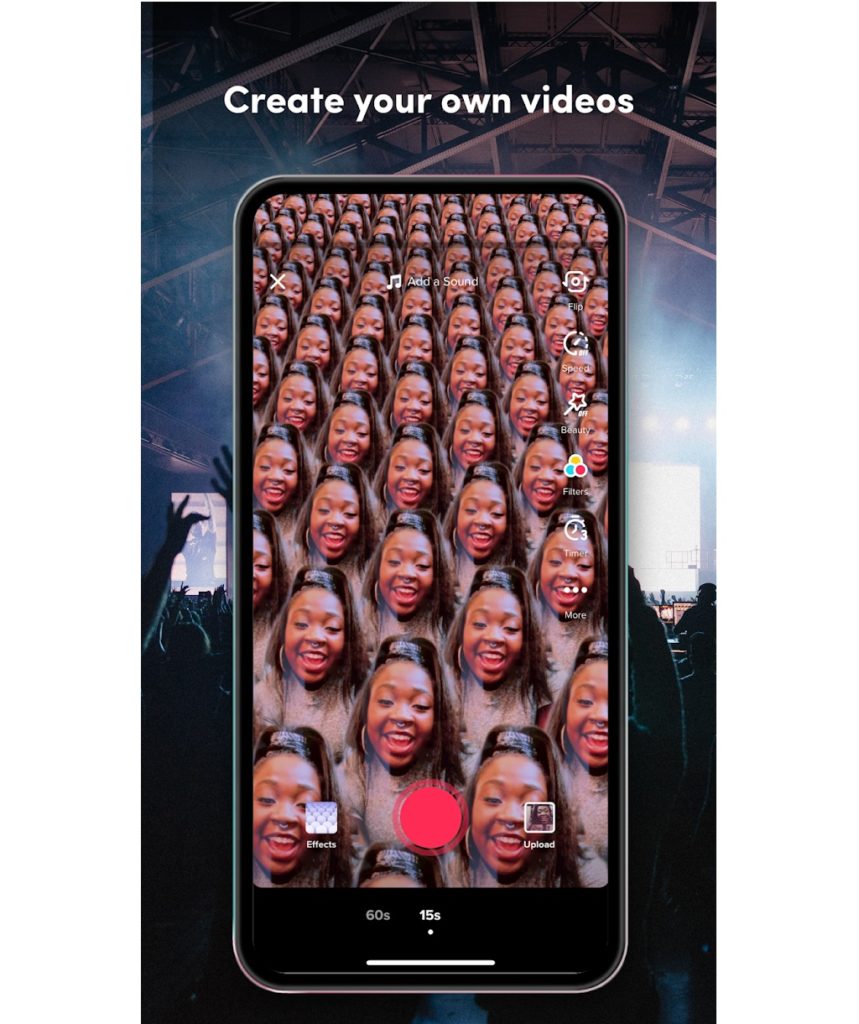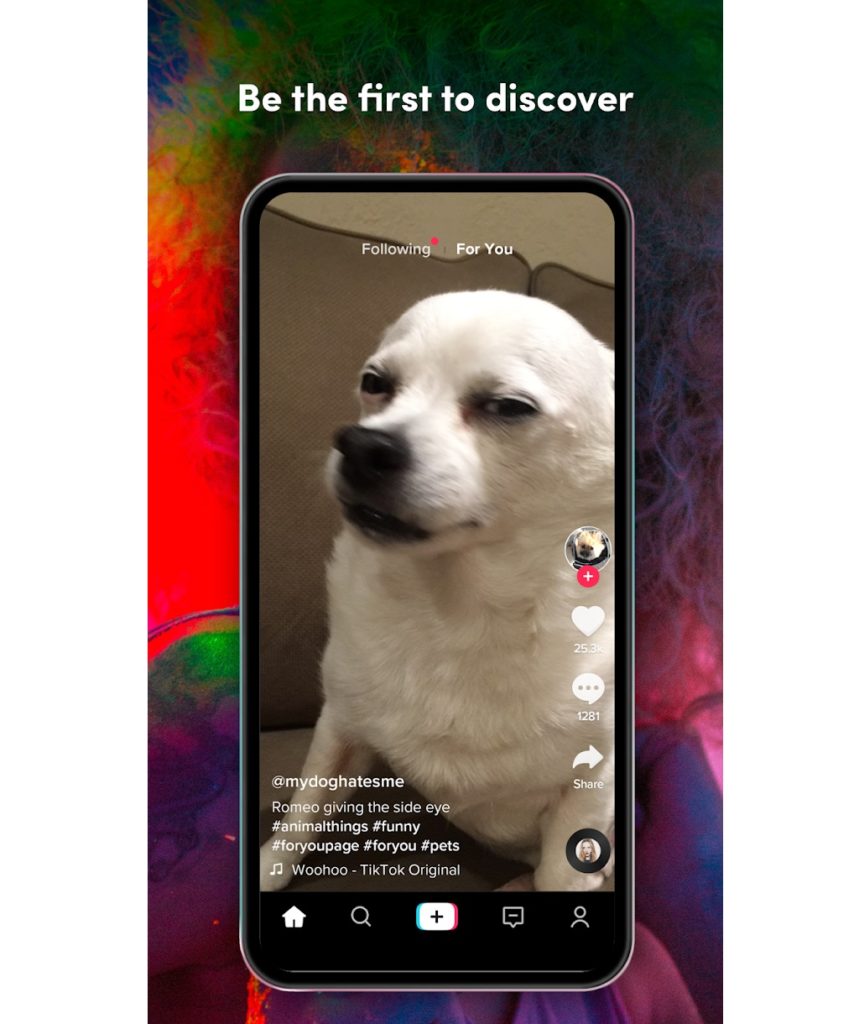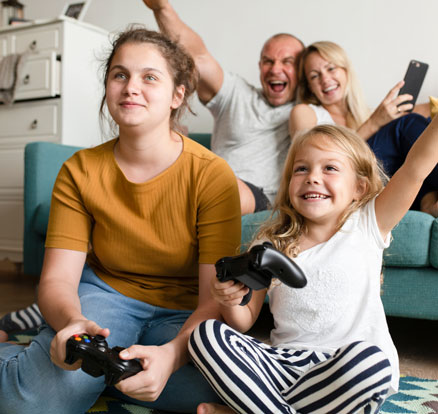
TikTok Review
The popular and creative services of TikTok make it easy to watch and share short video clips with others. Parents should familiarize themselves with the settings to ensure children greater privacy and reduce harmful content.
Choose language in the Google-box below. Some translations may be flawed or inaccurate.
This article is divided into three parts:
- General review of the app
- Suitability for children
- Parental control or protection for teens
If you want to read a particular part, for example, parental control, you can go directly to that section.
1. General review of TikTok
TikTok is a social medium where users can share short video clips. As many as 65 percent of Norwegian children between the ages of 9-18 use the popular app, according to the Norwegian Media Authority (Children and Media: 2020).
The service is based on the same principle as YouTube, and you can find short video clips of everything. However, there is also content that could potentially be harmful to children, for example, violence against animals, fights, nudity and sex, the use of alcohol and drugs, and so on.
The videos rarely last more than 15 seconds with 3 minutes maximum. Several other social media also have the same trend of sharing short video clips. For example, Instagram/Reels, YouTube Shorts, and Snapchat/Spotlight.

On TikTok, people post videos with effects, music, and creative moves. They often borrow ideas from each other and do something similar or further develop the ideas.
The same types of dances are posted with slight variations, and “challenges” go from user to user for better or worse. There may be innocent challenges, or that can simply be dangerous.
Content shared can get hearts (likes) and comments and can be shared to other platforms outside of TikTok. Users can also follow each other and become friends, and it’s possible to send instant messages if you are 16.

There are two sections in the app. “For You” is algorithmically controlled and automatically suggests new videos based on the user’s age, place of residence, previously liked videos, and so on. The next section is called “Following” where you can see content uploaded by the users you follow.
There’s also a search bar to look for new users, videos, and hashtags. A video that gets a hashtag will appear in a list along with others using the same hashtag. A separate menu called “Discover” displays a list of videos collected under different hashtags.
It is quite possible to watch video clips on TikTok without an account. However, in order to follow people and upload content, you need to create an account.
In this context, you must also accept the terms of use where you confirm that you are thirteen years of age or older. One can either use login details from social media accounts, phone number, or email to create a new account on TikTok.

However, we know that in Norway, 51 percent of nine-year-olds use one or more social media (Children and Media: 2020), and TikTok is very popular among them. Norway has an age limit of 13 years for using social media (the Privacy Act), or parents can give consent on behalf of their children under this age.
2. Suitability for Children
TikTok has received an age recommendation of 12+ in the App Store (iOS) and is labeled “Parental Guidance” from PEGI in the Play Store (Android).
Parental guidance is used as a tagging tool when the content of the app cannot be measured in advance. In TikTok, there is a change of content all the time depending on what users choose to share. In such cases, PEGI explains that parental guidance means that the content of the app may or may not be suitable for children.
Content with text, video sharing, images, and voice recordings can be positive and educative, or negative and destructive depending on what is said, written, and shared between senders and recipients in the community.
TikTok’s Terms of Use state that you must be thirteen or older to use the app. It is unclear which age recommendation really applies – the age labeling of the providers or the developer.
If children under the age of 13 are to have access, a qualitative assessment must be made. In any case, parental guidance and settings in the app are recommended to give your children safer use.
There are several options to make TikTok safer for children. Among others, you can limit who can see your kid’s posts, who can follow them, choose time limits, and more.
3. Parental control or protection for teens
TikTok has taken some steps to protect users between the ages of 13 – 15.
- The account is created private by default
- The comment section of videos of children is no longer open to absolutely everyone
- Others cannot borrow content from the videos created by children, i.e., creating a “duet” and “stitch” with children’s videos are not allowed
- Other people cannot download videos posted by children
- Child accounts are not suggested for new people to follow
- Kids can no longer buy digital stickers that they can give as gifts to others
Family Pairing – parental control from your own mobile
Family Pairing connects a parent’s TikTok account to the child’s account (parents must create a TikTok account themselves to use this option). Parents can then choose settings for the child’s account from their own mobile/TikTok account.
How to enable Family Pairing:
Go to your profile page
- Click on the three dots in the upper-right corner of the app to go to the settings
- Select Family Pairing
- On the parent’s account, select Parent, and on the child’s, select Teen. Then take a picture of the QR code to link the account together
- The adult can now click the child’s username and adjust different settings
Some of these settings can also be changed on the child’s account inside Digital wellbeing (if parents do not want a separate TikTok account).
With Family Pairing one can:
- Set limits on how long the kids can use TikTok daily
- Choose who can send a direct message (only friends or completely declined).
- Block inappropriate content with restricted mode.
- Lock your child’s account to private, not public
- Turn off the ability to search videos and get comments on videos
However, no filter is 100 percent secure. Inappropriate content can still appear in your kids’ video stream, and kids can find ways, such as creating a secret account.
How to make your child’s account private
- Go to Settings
- Click Privacy and then Private account
Please note that even though the account is private, the username, photo, and biography section is visible to everyone. Parents can lock the child’s account to private via family pairing also. Here you can also turn off others’ comments on your child’s videos.
Turn off the “duet” option
You can also decide not to let strangers create a “duet” with content that your child has uploaded. A Duet contains two videos on a split screen that play at the same time. It allows one to post one’s video side-by-side with a video from another creator.
- Go to Settings
- Tap Privacy
- Select Duet and change to Everyone, Friends, or None
- Choose the same for “Stitch”
Users with the age of 13 – 15 years have stitch and duet declined by default.
Turn off comments and instant messages
The online comment section can contain many things. There may be pleasant messages, also tendencies toward harassment and bullying. With a private user, the child is more likely to know the identity of the commenter. However, parents can also turn off comment fields and instant messages on “family pairing.”
To change the comment settings on your child’s user:
- Go to settings
- Tap Privacy and then Comments
- Choose who can comment on your videos and change to Everyone, Friends, or None
- Under the same tab Privacy, you can also turn off instant messaging
- Select Direct Messages and change to Friends or None
If the child has a stated age in the app between 13 – 15 years. They can’t receive comments from “everyone.” They can only choose friends or none.
Reports and blocks
It’s also a good idea to note that TikTok has, like other social media sites, opportunities to report and block other users. It can be content you react to or behavior.
- To report on a comment: Touch and hold the text and press report
- To report or block a user: Enter the profile, tap on the three dots in the top corner, and select Report or Block
- To report a video: Touch and hold the video and press Report
Other settings:
- On the privacy tab, choose whether others can tag your name in a video or comments
- Choose whether others can share a video that you have created
- Turn on a comment filter or words to be censored itself on the privacy tab
Worth talking about
In addition to going through the settings with your kids so they know where the reports and block button are, and what different settings are doing, it’s a good idea to talk to your kids about the smart use of TikTok:
- Talk about the “Not interested” button. Tap the arrow by the video to find the button. This allows less of the same type of content to appear in your child’s view list.
- Turn off targeted advertising. Go to settings and privacy. Select personalization and data. Uncheck personalized ads.
- Encourage your children to avoid sharing sensitive information such as passwords, names, addresses, and the like.
- Teach your children about the necessity of consent to publish videos and photos of others
- Have rules for what challenges the children can perform. Challenges are shared in the user community for better or for worse. Some are funny and harmless, others can have negative consequences
- Talk about possible money misuse – there is a feature in TikTok where TikTok celebrities have the opportunity to sell “digital stickers” to their followers. These are paid services such as having a celebrity follow you or saying your name out loud in a broadcast. Agree with your child on in-app spending rules. Children under the age of 18 cannot purchase and send gifts, though.
Here is also a separate page that Tik Tok has created for parents.
Tested on iOS
Link to the app: iOS / Android.
All collages are made from the app’s promotional images.
(Translated from Norwegian by Ratan Samadder)










